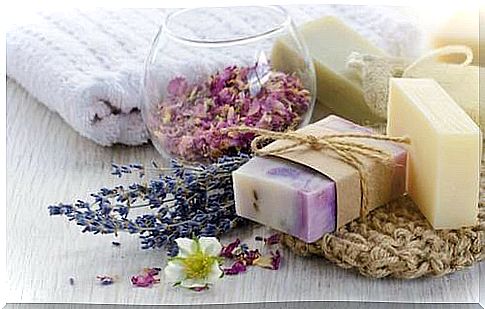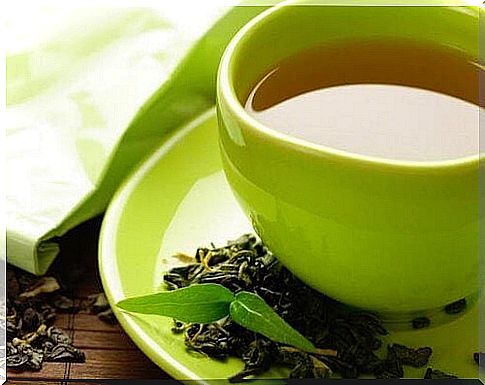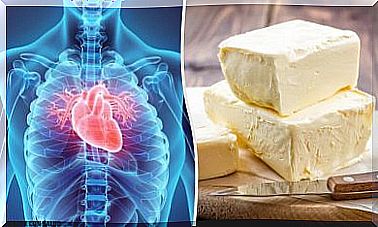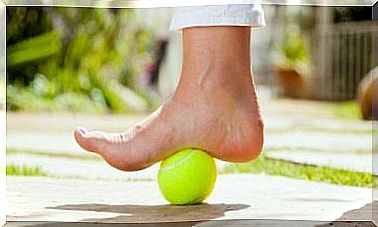3 Natural Soaps To Make At Home
If you like the natural, you shouldn’t hesitate to make these soaps for your skin. In a very few steps, although with enough care, you can make some really great natural soaps that will make you feel better than ever before.

Natural home-made soaps have grown in popularity in recent years. These, made with extracts of herbs, essential oils, and vegetable and animal fats, offer tremendous health benefits.
Depending on the ingredients used, the properties of soaps vary. For example, some have the ability to be great stimulants, while others, on the other hand, are relaxing.
Benefits of natural soaps
The biggest difference between natural soaps to prepare at home and industrialized soaps is in the manufacturing process. Lots of synthetic ingredients are added to artificial soaps, like most of the other cosmetic products we use.
However, this does not happen when we make them with natural ingredients. Here, we detail the benefits of natural soaps compared to industry soaps:
- They contain glycerin: glycerin, an element very beneficial for the skin and the hair, is extracted from synthetic soaps. It must be sold as a separate product so as not to lose its virtuous qualities.
- They do not contain chemicals: they are usually added to produce more lather and flavor the soaps. However, they also cause allergies and skin irritation.
- We can prepare them according to our needs: depending on the skin problem we have or what we are looking for, we can adapt the ingredients of the soap.
- There is a wide variety of soaps with therapeutic properties: we ensure the use of quality elements, while protecting the environment and avoiding pollution produced by factories.
Natural soaps to prepare at home
1. Soap for acne

When looking for effective acne ingredients, you should choose one of these:
- Clay
- Thyme
- Turmeric
- Organic sulfur
- Rosehip
In this example, we’ll show you how to make an acne soap made from thyme.
Ingredients
- Dye
- Dry thyme
- Thermometer
- Olive oil
- Caustic soda
- Coconut oil
- Rectangular mold
- Soap cutter
- Demineralized Water
- Almond oil
- Thyme essential oil
- Gloves, goggles and protective mask
Preparation
- First mix the water and soda in a sturdy container. This combination reaches very high temperatures. Therefore, mix always avoiding splashing. It is best to cover your skin when preparing it.
- Then heat the oil in a saucepan, to around 40 ° C.
- Mix the two preparations once the 40 to 50 ° C has been reached.
- Then add the oils, then the bleach – water and soda – and beat with a whisk for a few minutes.
- Also add thyme oil and food coloring. The latter is actually optional.
- Take a mold and sprinkle it with thyme. Cover it until it dries; it can take between one and three days.
- Unmold, cut and then store for a month or 40 days, namely the time of saponification.
2. Olive oil soap
Did you know that olive oil can also be used to make soaps? These help maintain the balance between the water emulsion and the lipids that make up the skin. Thus their defenses are maintained against pathogenic microorganisms originating from the external environment.
Ingredients
- 1 liter of virgin olive oil
- 300 milliliters of water (1 and 1/2 glass)
- 125 grams of caustic soda (1/2 glass)
Preparation
- Gradually add the caustic soda to the water and stir as in the first point of the previous soap. Again, it is also recommended to pay attention to the high temperature of this mixture to avoid getting burned.
- Heat the oil in a saucepan until it reaches a temperature similar – not too high – to that of the other mixture.
- Mix the two preparations very carefully and without stopping mixing them. Preferably you should mix with a whisk.
- Cook over low heat and then stir for about 30 minutes. When the mixture reaches a more solid consistency, turn off the heat.
- Keep stirring even with the heat off until the mixture reaches a mash-like texture. At this point, add any aromatic herbs or essential oils of your choice.
- Then place in a mold. Once the mixture has solidified, remove it and let it saponify.
3. Natural green tea soap

Besides having a lot of health benefits, green tea can be used to make soaps. What are its properties? It is very hydrating and also retains antioxidant benefits.
Ingredients
- 450 grams of coconut oil (3 and 1/2 cups)
- 80 grams of olive oil (8 tablespoons)
- 300 grams of shea butter (2 and 1/2 cups)
- 125 grams of caustic soda (1/2 cup)
- 320 milliliters of demineralized water (1 and 1/2 glass)
- 30 grams of tea oil or also of camellia (3 tablespoons)
- 10 grams of green tea powder (1 tbsp)
- Aromatic essence of green tea (according to taste)
- A mold
Preparation
- As with the previous soaps, pour the soda into the water and mix.
- While the previous mixture is heating up, melt the shea butter and coconut oil in a saucepan. When everything is almost melted, add the olive oil and turn off the heat.
- Weigh 30 grams of green tea oil and 10 grams of green tea powder to add them to the mixture as well. Book; these will be used at the end.
- Pour the oil into a large container and mix with the water and soda when both reach a medium temperature. Beat gently using a whisk.
- When the mixture reaches a mash-like texture, add green tea and green tea oil while stirring. Also add the aromatic essence to taste.
- Then pour into the mold and sprinkle powdered green tea on top.
- Let dry for 24 hours and remove from the mold.
- Finally, cut into soaps and let saponify for 4 weeks.
As a final recommendation, be aware that it is also necessary to specify that the place of preparation should be widely ventilated. This is because combinations of acids can have harmful effects if they do not disperse quickly.
Beyond the safety recommendations, the preparation is simple. In a matter of minutes, you will have the perfect natural soaps to keep your skin hydrated, protected and soft.









